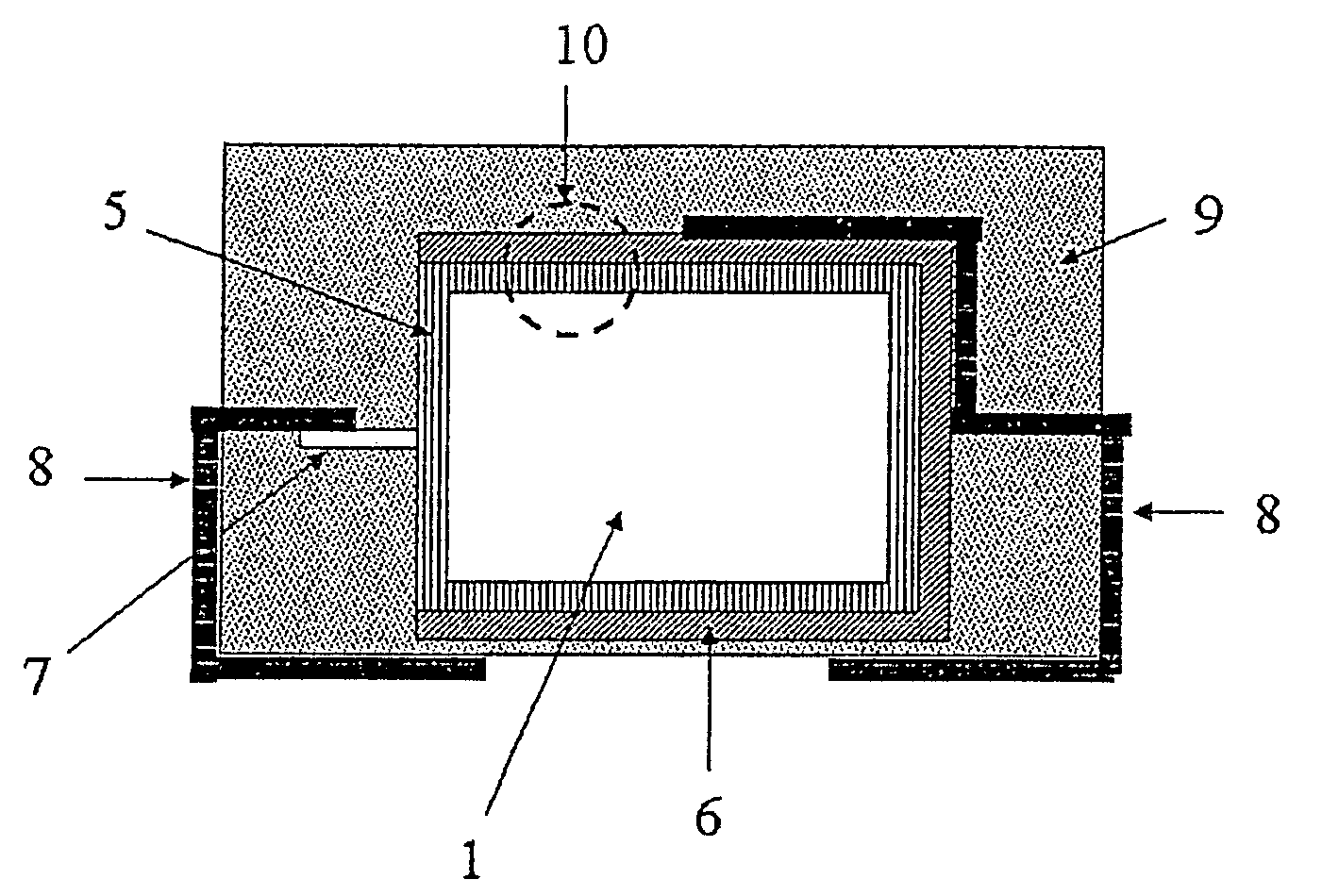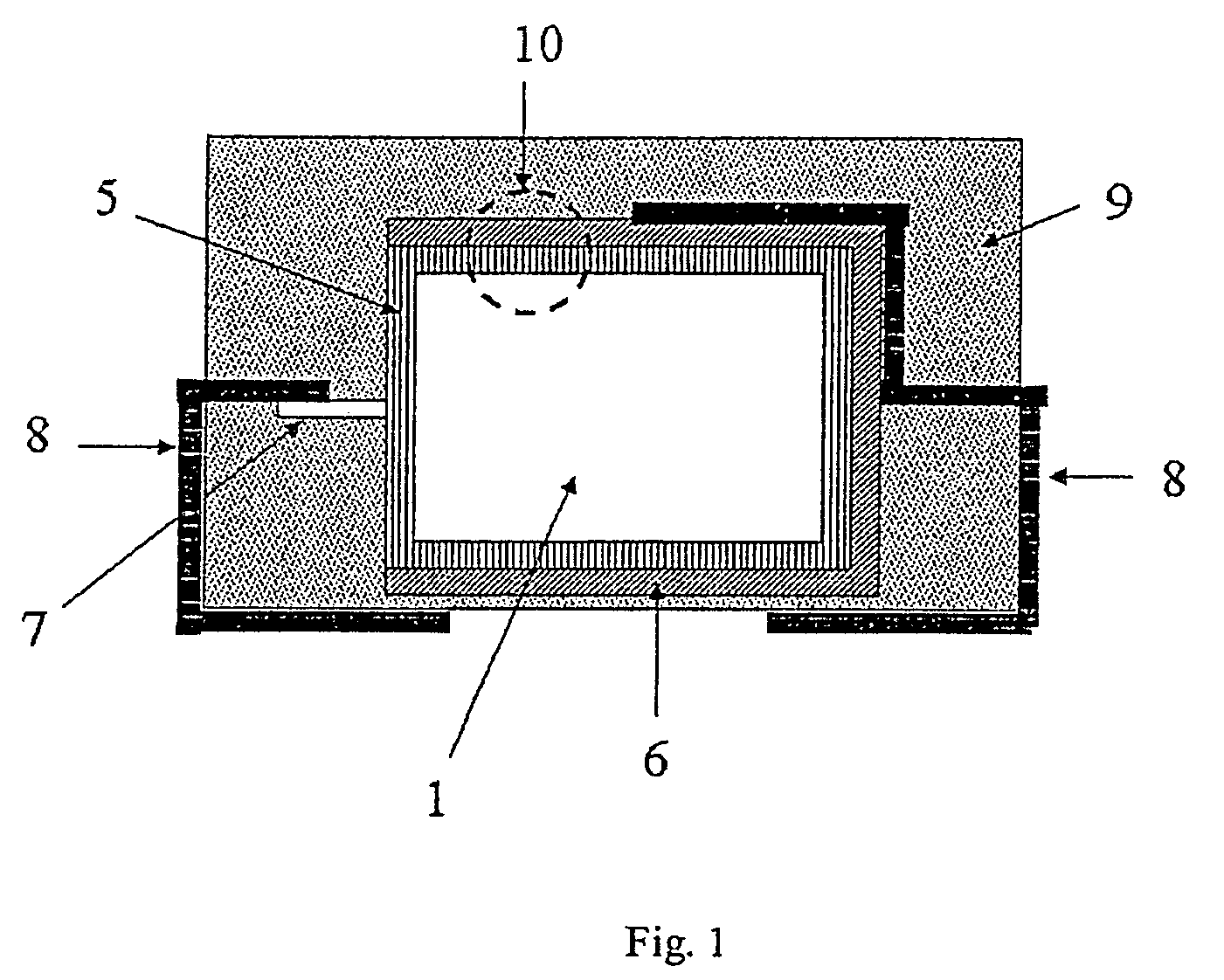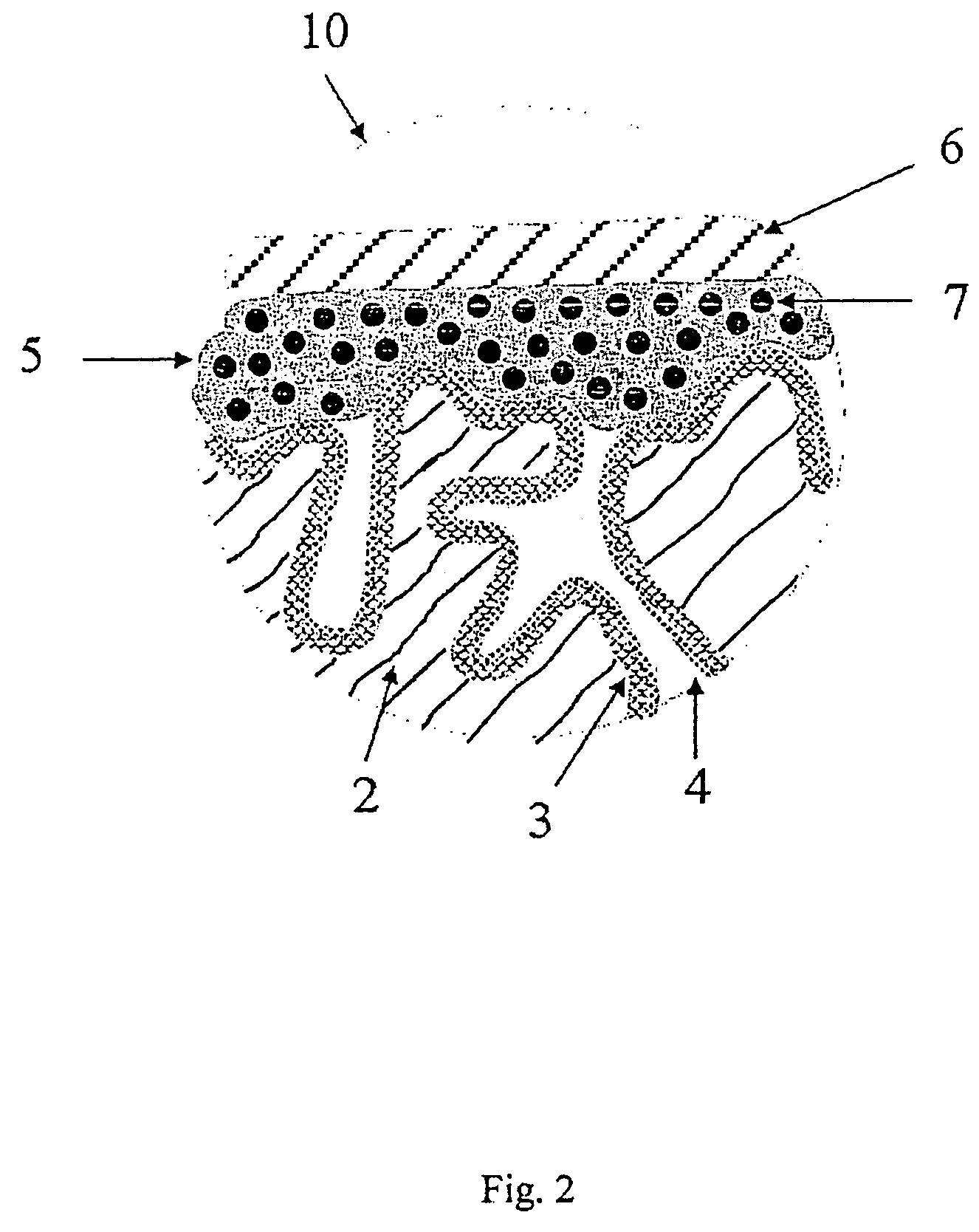Electrolytic capacitors with a polymeric outer layer and process for the production thereof
a technology of polymer outer layer and electrolytic capacitor, which is applied in the manufacture of electrolytic capacitors, casings/cabinets/drawers, electrical equipment, etc., can solve the problems of high mechanical stress that may greatly increase the residual current of capacitor anodes, difficult formation of thick polymeric outer layers by in situ polymerisation, and large number of coating cycles. , to achieve the effect of improving the residual current of capacitors, simple and reliably reproducible, and good edge coverag
- Summary
- Abstract
- Description
- Claims
- Application Information
AI Technical Summary
Benefits of technology
Problems solved by technology
Method used
Image
Examples
example 1
Preparation of a Dispersion According to the Invention
[0256]Preparation of Conductive Particles b)
[0257]868 g deionised water, 330 g of an aqueous polystyrene sulphuric acid solution having an average molecular weight of 70,000 and a solids content of 3.8% by weight were placed in a 2-l three-necked flask with stirrer and internal thermometer. The reaction temperature was maintained between 20 and 25° C.
[0258]5.1 g 3,4-ethylenedioxythiophene were added while stirring. The solution was stirred for 30 minutes. 0.03 g iron(III) sulphate and 9.5 g sodium persulphate were then added and the solution was stirred for a further 24 hours.
[0259]Once the reaction has been completed, 100 ml of a strongly acid cation exchanger and 250 ml of a weakly basic anion exchanger were added, for removing inorganic salts, and the solution was stirred for a further two hours. The ion exchanger was filtered out.
[0260]The resulting poly(3,4-ethylenedioxythiophene) / polystyrene sulphonate dispersion had a soli...
example 2
Production of Capacitors
[0267]Production of Oxidised Capacitors
[0268]Tantalum powder with a specific capacitance of 50,000 μFV / g was compacted into pellets, a tantalum wire 7 being included, and sintered to form a porous electrode body 2 with dimensions of 4.2 mm*3 mm*1.6 mm. The electrode bodies 2 were anodised in a phosphoric acid electrolyte to 30 V.
[0269]Chemical In Situ Coating of the Electrode Bodies
[0270]A solution composed of 1 part by weight 3,4-ethylenedioxythiophene (BAYTRON® M, H. C. Starck GmbH) and 20 parts by weight of a 40% by weight ethanolic solution of iron(III)-p-toluenesulphonate (BAYTRON® C-E, H. C. Starck GmbH) was produced.
[0271]The solution was used to impregnate nine anodised electrode bodies 2. The electrode bodies 2 were steeped in this solution and then dried for 30 min at ambient temperature (20° C.). They were then heat treated for 30 min at 50° C. in a drying oven. The electrode bodies were then washed for 30 min in a 2% by weight aqueous solution of ...
example 3
Preparation of a Dispersion According to the Invention
[0286]In a beaker with stirrer, 180 g PEDT / PSS dispersion prepared according to Example 1.1, 10 g of a sulphopolyester (Eastek 1100, Eastman), 8 g dimethyl sulphoxide, 1 g 3-glycidoxypropyltrimethoxysilane (Silquest A-187, OSi Specialities) and 0.4 g of wetting agent (Dynol 604, Air Products) were mixed intensively for one hour. 2 g PEDT / toluene sulphonate powder (prepared according to Example 1.2) were then dispersed using a bead mill dissolver unit. For this purpose, 300 g of zirconium oxide beads (Ø 1 mm) were added and the mixture was stirred at 7000 rpm for one hour, while being cooled with water. Finally, the ground beads were separated via a 0.8-μm sieve. The dispersion had a solids content of 4.7%.
[0287]The distribution of the solid particles in the dispersion was determined by laser diffraction (MS 2000 Hydro S). The following diameter distribution values were obtained:
[0288]d10: 1.5 μm
[0289]d50: 3.0 μm (average diameter...
PUM
| Property | Measurement | Unit |
|---|---|---|
| diameter | aaaaa | aaaaa |
| diameter | aaaaa | aaaaa |
| diameter | aaaaa | aaaaa |
Abstract
Description
Claims
Application Information
 Login to View More
Login to View More - R&D
- Intellectual Property
- Life Sciences
- Materials
- Tech Scout
- Unparalleled Data Quality
- Higher Quality Content
- 60% Fewer Hallucinations
Browse by: Latest US Patents, China's latest patents, Technical Efficacy Thesaurus, Application Domain, Technology Topic, Popular Technical Reports.
© 2025 PatSnap. All rights reserved.Legal|Privacy policy|Modern Slavery Act Transparency Statement|Sitemap|About US| Contact US: help@patsnap.com



